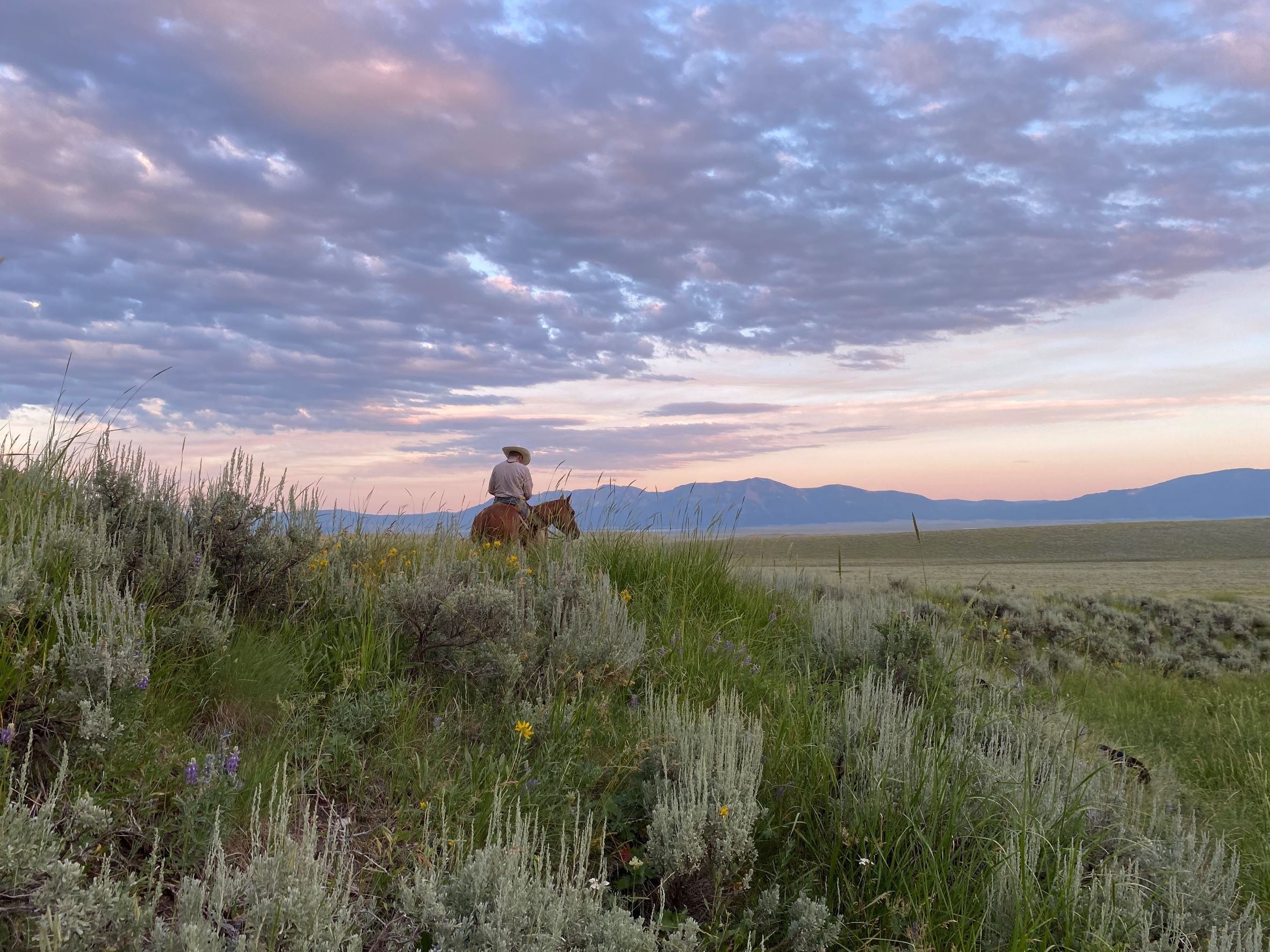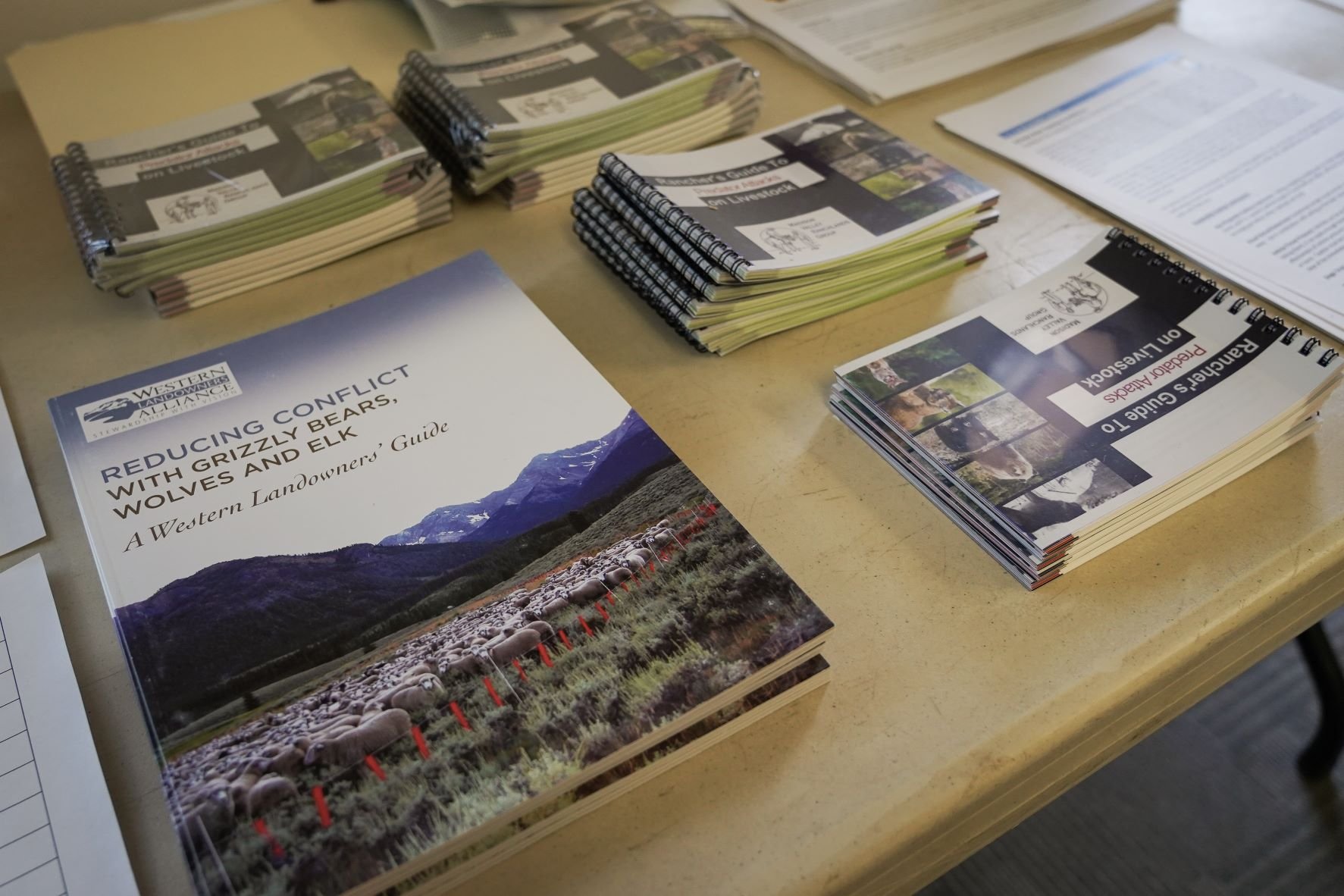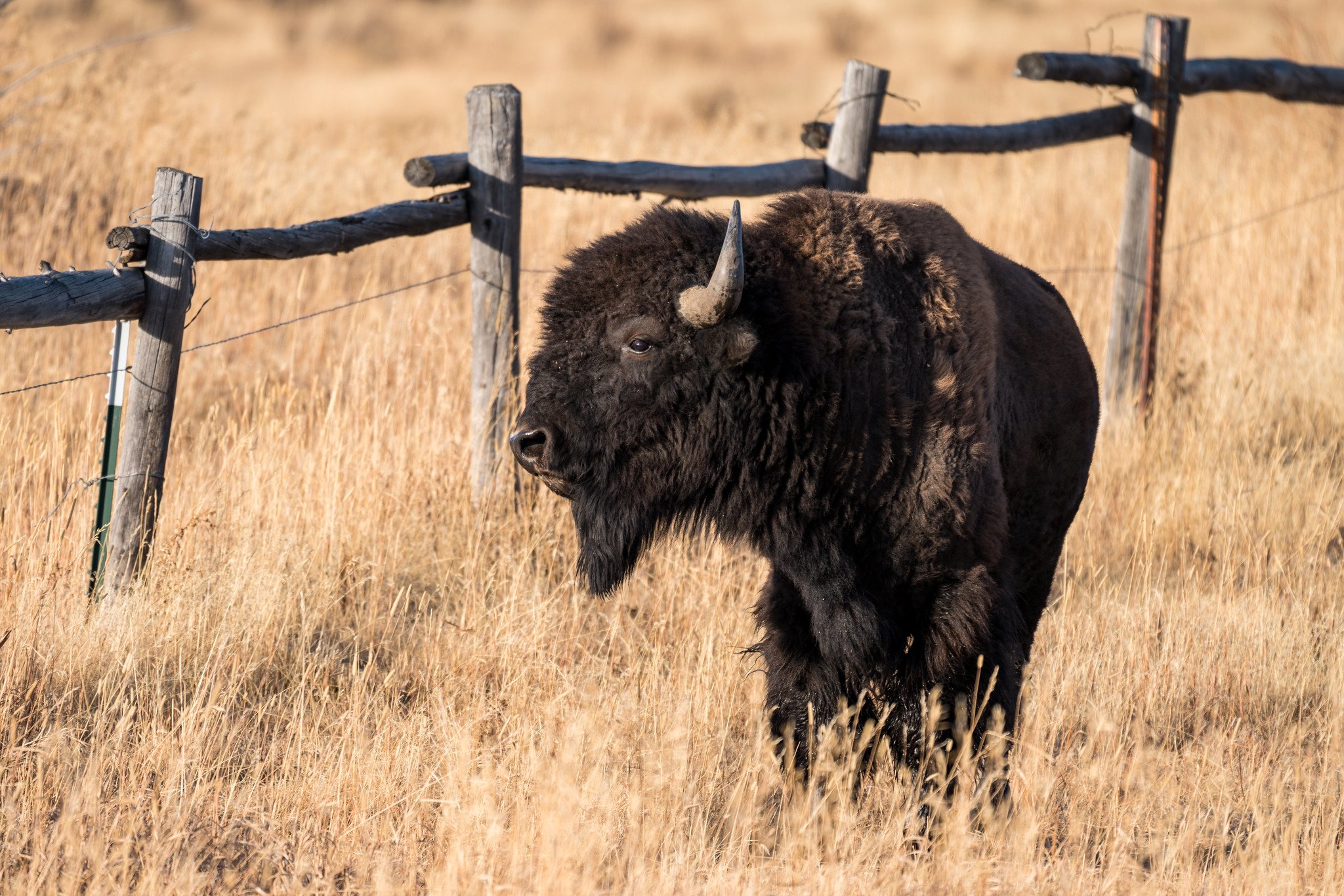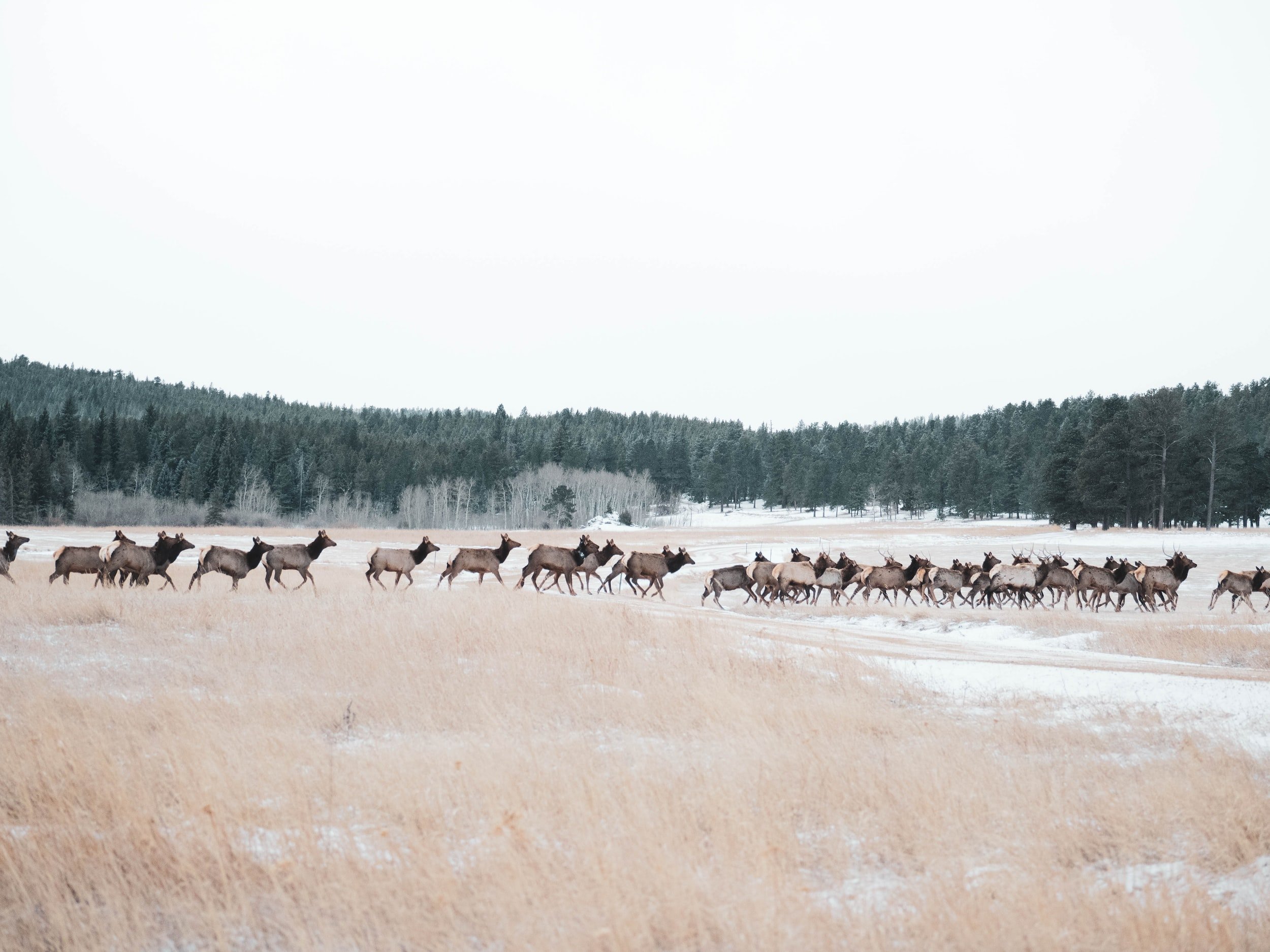
Reducing Wildlife Conflicts with Ranching Partnerships
The Greater Yellowstone Ecosystem is a landscape shared by wildlife and people. Habitat for species like grizzly bear, wolves, elk, and deer often exists alongside or overlaps working lands, which can lead to the complex challenge of wildlife conflict.
At the Greater Yellowstone Coalition, we work in partnership with local communities to find solutions to wildlife conflict and advance shared land, water, and wildlife conservation goals. Our ranching partnerships and programs in the Ruby Valley, Gravelly Range, Tom Miner Basin, Paradise Valley, Centennial Valley, Upper Green, and Absaroka Front ensure working ranches and livelihoods remain viable while grizzly bears, wolves, and ungulates thrive in this ecosystem for years to come.
A defining element of Greater Yellowstone are the iconic wildlife that call this region home. Species like grizzly bears, wolves, and elk are sustained by the open space and connected habitat found throughout the ecosystem’s steep slopes, lush valley bottoms, and sprawling sagebrush steppe. Across the ecosystem, this critical open space is often held by working lands. Working ranches and grazing allotments serve as vital habitat and connective corridors for wildlife. These lands also support multigenerational ranching families and their livelihoods, a crucial element of the social fabric holding together communities in the Greater Yellowstone Ecosystem.
The recovery and expansion of grizzly bear and wolf populations and the continued ability of ungulates to move across the landscape are conservation success stories. Along with these successes come challenges for wildlife and people.
As wildlife move across the ecosystem, and in some cases expand into places they have not inhabited for generations, conflicts between people and wildlife are becoming more common.
Grizzly bears and wolves may depredate livestock, which reduces a rancher’s profit and can lead to the removal or relocation of wildlife. A herd of elk can wander into hay storage and decimate a year-long supply in a matter of hours, leaving a rancher without the resources needed to maintain their livelihood. Range riders monitoring livestock on a grazing allotment may encounter bears defending a food source, presenting a human safety concern. Conflicts can lead to dead wildlife, property damage, costly repairs for ranchers, and even human injury or fatality – all contributing to reduced tolerance for sharing the landscape with wildlife and leading to policies and management action that make it difficult for people and wild animals to coexist.
Ultimately, the success of conflict-prone wildlife depends largely on their ability to stay out of trouble with people.
Wildlife conflict is a complex challenge that requires thoughtful, multi-faceted, and creative solutions. By working closely with people who share the land with Greater Yellowstone’s iconic wildlife, we can better understand the challenges of wildlife conflict, minimize the number of bears and wolves removed from the landscape, and keep people safe. Partnerships with ranchers help us create the most durable solutions to wildlife conflict and are essential to maintaining generational working ranches and the vital habitat and connective corridors they provide for wildlife. Through range rider programs, grazing allotment agreements, education, and other innovative coexistence tools, we are alleviating conflict, learning to live with Greater Yellowstone’s iconic wildlife, and maintaining ranching livelihoods.
The Greater Yellowstone Coalition envisions a landscape where working ranches thrive, open space is preserved, and wildlife and people coexist long into the future.
How we’re supporting wildlife-conflict prevention with ranchers:
Range Rider Programs
Range riders, or people who actively monitor wildlife and support livestock management actions, are an important tool to reduce depredation risk and document wildlife conflict. GYC funds range riding programs in the Gravelly Range, Centennial Valley, and Tom Miner Basin.
Grazing Allotment Agreements
GYC has worked closely with ranchers, federal agencies, and nonprofit partners to develop voluntary agreements to retire, convert, or create new management plans for grazing allotments across the ecosystem. To date, over 900,000 acres have been placed under agreements that help keep bears wild, people safe, and livelihoods in place.
Education and Outreach
Working with our partners on the ground, we identify and target areas of education that can provide further insight related to wildlife conflict for cow hands, range riders, livestock producers, agency staff, and nonprofit personnel. GYC has co-hosted workshops and talks on topics including bear behavior and biology.
Banner Photo - Hilary Zaranek






